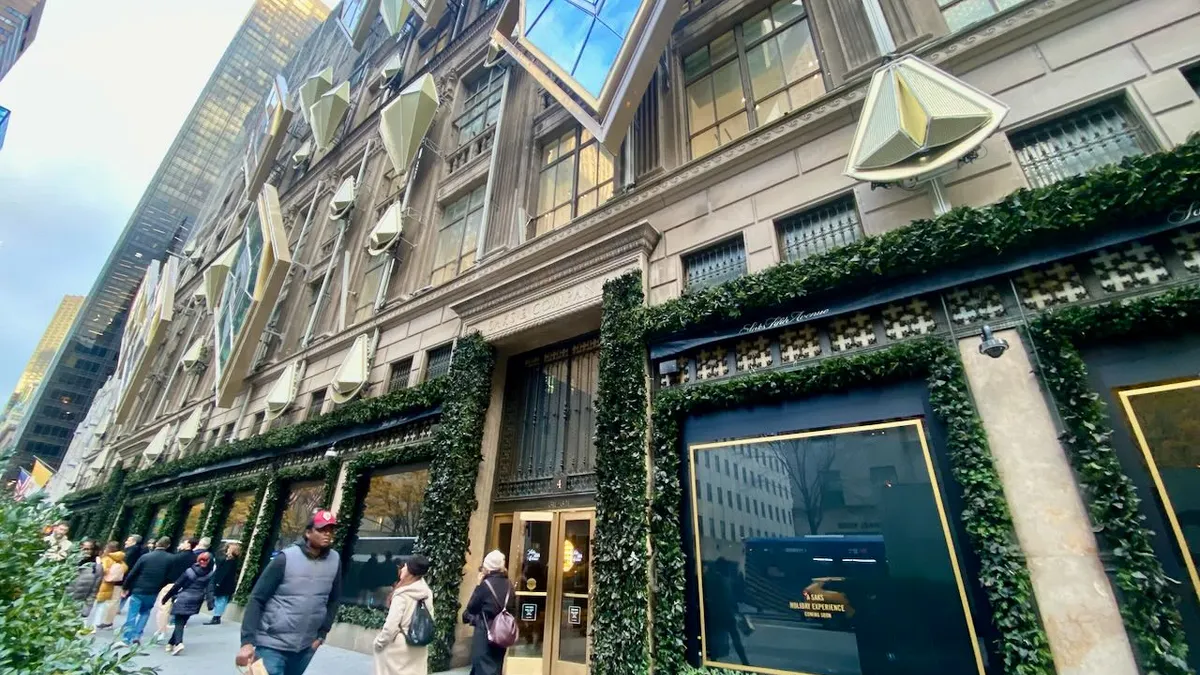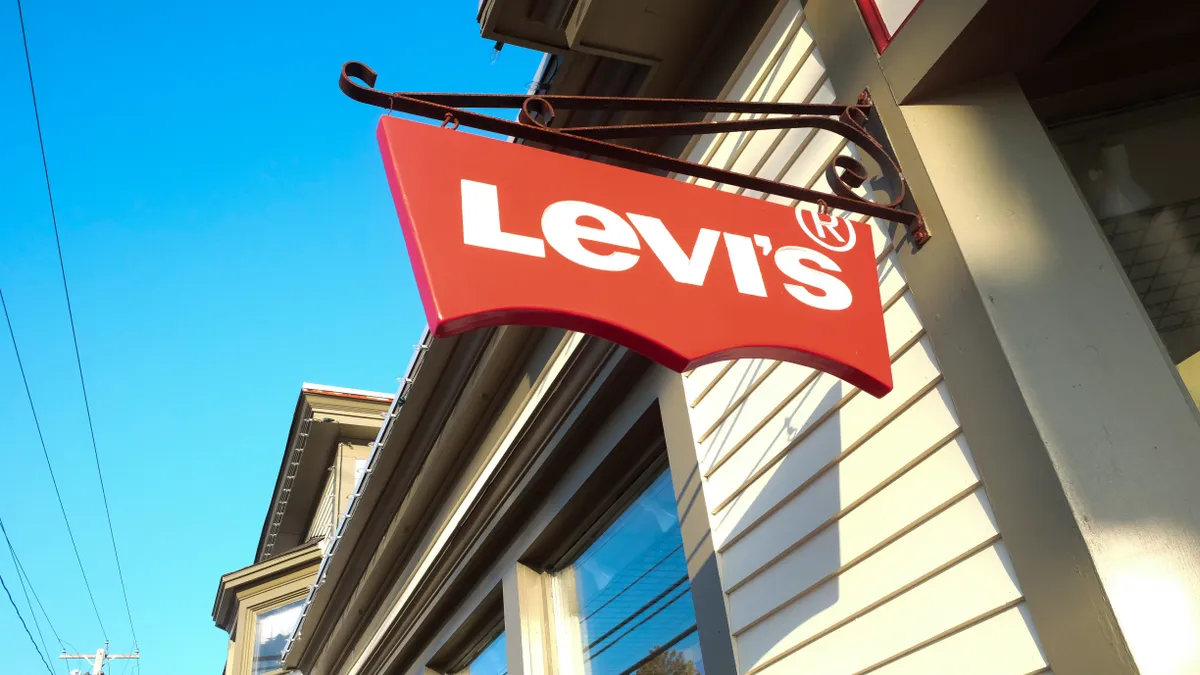As stores in some areas of the country move to reopen, there's evidence of some pent-up demand. But apparel retailers must brace themselves for a post-pandemic environment with consumers wary of crowded spaces and hesitant about spending.
Recovery in markets that have eased lockdown restrictions varies around the world depending on consumer confidence, an area's reliance on tourist spending, the general state of the economy and unemployment, and the level of pent-up demand from people willing and able to spend, according to research from GlobalData.
It's not a pretty picture for apparel. All told, global apparel sales are now forecast to decline 15.2% or $297 billion this year, with U.S. apparel retail accounting for 40% of that, GlobalData Principal Analyst Honor Strachan said in a report emailed to Retail Dive.
Even if apparel sales return to 2019 levels later this year, GlobalData's research across 49 markets indicates that won't be enough to make up for losses in the first half of the year. "The global apparel market is not expected to return or exceed its 2019 value, until at least 2022," according to the report.
Evidence of pent-up demand
Over 40% of respondents to a survey by Wells Fargo analysts said they expect their spending on apparel and footwear to revert to pre-COVID levels, according to a client note emailed to Retail Dive.
More than half told those analysts that they're looking most forward to buying non-athletic apparel, and 41% of women said they look forward to buying beauty products — a reflection of "pent-up demand that has been building since mid-March."
"[C]onsumers have been sheltering in place during the seasonal change from winter to spring, which is typically a significant catalyst for" those purchases, analysts led by Ike Boruchow said.
Nearly half plan to spend as much as they did before at department stores and 44% at specialty apparel stores, but to shift that spending online, Wells Fargo found. But they also point out that respondents were about six times as likely to say that they expect to spend less than they used to (49%) than those saying they plan to spend more (8%).
Wariness about physical stores
Some political leaders, retailers and mall owners are pushing to unlock store doors, but that doesn't mean that shoppers are coming back.
Even once stores are open, shoppers on average will shop 30% less frequently at brick-and-mortar locations than they did pre-COVID, and they expressed particular concern to Wells Fargo researchers about crowded department stores and discount stores.
Boruchow's team estimates that per-capita spending in brick-and-mortar will decline 10% from pre-COVID levels "even when things return to 'normal.'"
"[I]t would seem that store-level spending won't reach the 'new normal' until February 2021 – or 9 months post-reopening," they said, based on a hypothetical store opening at the start of May this year. "In the end, store volumes in FY21 should likely be 5-10% below FY19 levels for the majority of the space."
A hit to margins
That shift to e-commerce spend is an acceleration of an existing trend from even before the pandemic, of course. But it, along with the need to work through inventory that has piled up during the pandemic, spells bad news for margins.
"[E]-commerce, while a necessary means to do business, carries much lower margins than the store channel, which will further weigh on results in the current operating environment," Telsey Advisory Group analysts said in a May 11 client note.
As with volume, operating margins, even as they bounce back next year, are unlikely to recover from the consequences of the pandemic this year, they said. Sales declines from closed stores plus the "incremental investments related to labor, safety, and cleaning for the essential ones that remain open" are likely to be more corrosive to operating margin than during the Great Recession, according to Telsey.
In a familiar pattern, judging by what happened in the Great Recession, off-price stores are poised to perform well. The situation rendered by the pandemic, as during the economic crisis, is "where off-pricers thrive," Credit Suisse analyst Michael Binetti said during a call Thursday with the firm's Chief U.S. Equity Strategist Jonathan Golub. "The last recession is what gave rise to the great off-price movement here," Binetti said, noting a similar inventory pile-up from a stoppage in sales.
Indeed, according to Telsey, during that economic downturn, department stores experienced the biggest operating margin decrease, 362 basis points on average, while off-price averaged a 239 basis point increase. By category, apparel operating margin fell 131 basis points and footwear declined 85 basis points.
Specialty apparel retailers should similarly brace for Great Recession-like declines, or worse, Telsey said.
"While the proliferation of the e-commerce channel will certainly help to offset some of the lost sales from brick-and-mortar closures due to the virus outbreak, most of our companies generate around 70%-90% of total revenues in store, which will prove to be a meaningful headwind in [the first half of the year], in our view," they said, noting also the lower margins from online sales.























